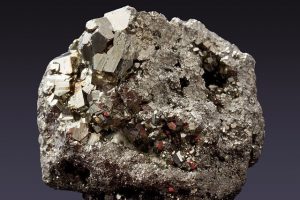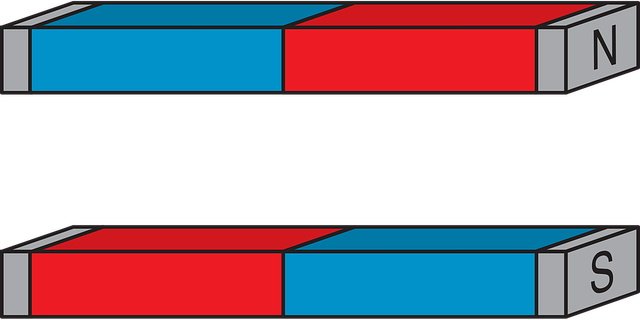Permanent magnet materials are magnetic materials that can permanently generate a magnetic field. Common permanent magnetic materials include neodymium-iron-boron magnets, cobalt hard magnetic alloys, ferrite, AlNiCo magnets, and iron-silver graphite materials. Permanent magnetic materials do not require external energy input when working. They have many advantages such as energy saving and convenience. In particular, rare earth permanent magnetic materials are characterized by both high coercivity and high magnetic energy product, and smaller and thinner magnet sizes can be used to form the magnetic circuit of the device to realize the function of the product. It greatly promotes the miniaturization and lightweight of permanent magnet devices.

Materials used to create permanent magnets operate within the demagnetization segment of the hysteresis loop’s second quadrant, following extensive magnetic saturation and magnetization. They are crucial fundamental magnetic materials with an extensive scope of applications. As essential components in high-tech domains, permanent magnetic materials have found broad usage across various sectors including aerospace, national defense, military industry, electronic communication, transportation, industrial energy, and consumer electronics, among others.
According to the principle of operation, the applications of permanent magnets can be divided into five categories:
1.Conversion of electrical energy into mechanical energy
Principle: The effect of magnetic fields on current-carrying conductors
Physical Law: Ampere’s law
Typical Application: Speakers, motors, headphones, measuring instruments
2.Conversion of mechanical energy into electrical energy
Principle: Motion of a conductor relative to a magnetic field produces an induced electromotive force
Physical Law: Faraday’s law
Typical Application: Generators, microphones, sensors
3.Conversion between mechanical energies
Principle: Interaction between the poles of a permanent magnet and between a permanent magnet and a ferromagnetic substance
Physical Law: Coulomb’s law
Typical Application: Magnets for adsorption, magnetic separators, magnetic filters, magnetic couplings, permanent magnetic suction cups
4.Various magnetic effects
Principle: Interactions between magnetic fields and light, electricity and heat
Physical Law: None
Typical Application: Nuclear magnetic resonances, oscillators, optical isolators
5.Other applications
Principle: The effect of magnetic fields on charged particles
Physical Law: Lorentz’s law
Typical Application: Magnetrons, particle gas pedals, magnetic spectrometers, magnetron sputtering, electrical switches
Permanent magnet materials are widely used. In the early stage of engineering development, how to choose the right permanent magnet material is a question for every engineer to consider. Each permanent magnet material has its own unique characteristics. So when selecting a permanent magnet, you need to consider a number of factors such as the required magnetic field strength, temperature resistance, cost, and manufacturing process. We recommend that engineers follow the steps outlined below:
1.Determination of magnetic field strength requirements
Permanent magnets are used primarily to provide passive magnetic fields as a functional component (rather than a cosmetic or structural part) in an entire system or device. Magnetic field strength is a key indicator of magnet performance and a core element of engineering design. How to maximize the use of the magnetic field strength of permanent magnets is also the basic goal of permanent magnet device magnet design. Engineers can determine the target magnetic field strength through calculations and use it as the basis for subsequent material selection.
2.Selection of suitable magnetic materials
Currently, permanent magnetic materials commonly used in the engineering field include sintered NdFeB, sintered SmCo, sintered or cast AlNiCo, sintered ferrite, bonded and injection molded magnets as well as a small number of new materials, such as samarium-iron nitrogen, etc. Different permanent magnetic materials have their own magnetic properties and material characteristics. Different permanent magnet materials have their own magnetic properties and material characteristics.
3.Determination of the size of the magnets
The size and shape of permanent magnets selected depends on the specific requirements of the actual application. For realizing a certain magnetic field strength, different amounts of permanent magnet materials are used, and different amounts are required. The required size and shape of the product is determined by calculations and tests, taking into account factors such as space constraints and magnetic field direction.
4.Assessment of magnet processability
Currently, there are three primary production processes for conventional permanent magnetic materials: sintering, casting, and molding. Sintered and cast permanent magnet materials are known for being rigid and brittle, with limited toughness and machinability. Typically, these materials are first formed into blanks and then subjected to wire cutting, slicing, and grinding techniques for further processing. However, they cannot undergo regular hardware processing methods like turning, milling, and planing. Most conventional products made from these materials have simple shapes such as sheets, rings, and tiles. If complex shapes or high precision are required, special processes are necessary, which can significantly increase processing costs. Therefore, it is crucial to consider these processing factors during the initial product design phase.
5.Attention to work environment factors
The environment in which a permanent magnet operates has a significant impact on its performance and lifetime. Temperature, humidity, and exposure to corrosive materials may negatively affect the magnet. It is therefore necessary to ensure that the selected magnetic materials are adapted to the actual application environment. NdFeB and ferrite have a narrow operating temperature range, while samarium cobalt and AlNiCo have a wider operating temperature range.
6.Material cost trade-offs
The cost of different types of permanent magnet materials varies greatly. Therefore, full consideration should be given to the selection to ensure that the project cost is controlled while meeting the performance requirements. Taking Φ10x10mm round products as an example, sintered samarium cobalt is the most expensive and sintered ferrite is the least expensive.
7.Attention to other special requirements
Certain application scenarios may have specific requirements for magnets, such as high coercivity, high remanence or low temperature coefficient. In such cases, it is recommended that you contact us to discuss and evaluate the specific special requirements.
Based on the above factors, the performance and characteristics of common permanent magnet materials are summarized as follows:

NdFeB Permanent Magnet Material
Neodymium-iron-boron (NdFeB) permanent magnets are high-performance permanent magnet materials introduced in 1983.
Advantages: 1. Magnetic properties higher than rare earth cobalt permanent magnets, residual magnetic induction, magnetic induction coercivity, maximum magnetic energy product are very high, is currently the best magnetic performance of permanent magnets; 2. cost-effective, because neodymium in the rare earth content of samarium more than a dozen times, the price of iron and boron is also very cheap, and at the same time, does not contain the strategic material cobalt. This is the reason why NdFeB has been widely used and popularized rapidly.
Disadvantages: 1. low Curie temperature, high temperature coefficient, thus the magnetic loss is larger when used at high temperatures and the thermal stability of magnetic properties is poor; 2. due to the large amount of iron and neodymium, it is easy to rust and corrode.
Samarium Cobalt Magnet
Samarium cobalt magnet is a kind of magnetic material made of samarium, cobalt and other metal rare earth materials by proportioning, melting and refining into alloy, after crushing, pressing and sintering. It has high magnetic energy product and very low temperature coefficient. The maximum working temperature can reach 350 degrees Celsius, and the negative temperature is not limited. In the working temperature is greater than 180 degrees Celsius, its maximum magnetic energy product and temperature stability and chemical stability are more than neodymium iron boron permanent magnetic material. Samarium cobalt magnets have strong corrosion and oxidation resistance. They are widely used in aerospace, national defense industry, microwave devices, communication, medical equipment, instruments, meters, all kinds of magnetic transmission devices, sensors, magnetic processors, motors, magnetic cranes and so on.
AlNiCo Magnets
AlNiCo Magnets Features:It is an alloy composed of aluminium, nickel, cobalt, iron and other trace metal elements. The casting process can be processed into different sizes and shapes with good work ability. Casting AlNiCo permanent magnets have the lowest reversible temperature coefficient, the working temperature can be as high as 600 degrees Celsius or more. They are mainly used in automotive parts, instrumentation, electro-acoustics, motors, teaching, and aerospace military and other fields. They are famous for their low temperature coefficient, high temperature resistance, humidity resistance, oxidation resistance and good working stability.
Ferrite Magnet
Ferrite is manufactured by ceramic process method. It has a hard texture and is a brittle material. Ferrite magnets have become the most widely used permanent magnets due to their good temperature resistance, low price and moderate performance. Ferrite magnets have high magnetic properties, good time stability and low temperature coefficient. Ferrite magnets are widely used in electric meters, instruments, motors, automatic control, microwave devices, radar and medical devices.
When choosing permanent magnet materials, it is important to consider the aforementioned factors and select the suitable material based on the project requirements. If you have any inquiries during the evaluation stage, please feel free to get in touch with us. We are ready to offer expert guidance and comprehensive assistance to meet your needs.